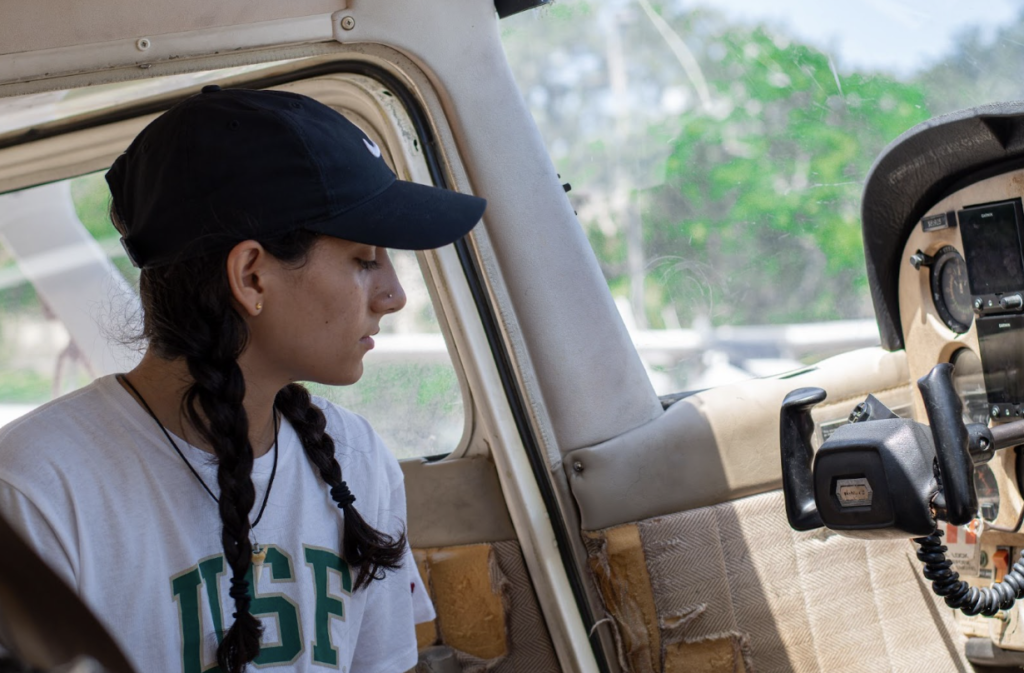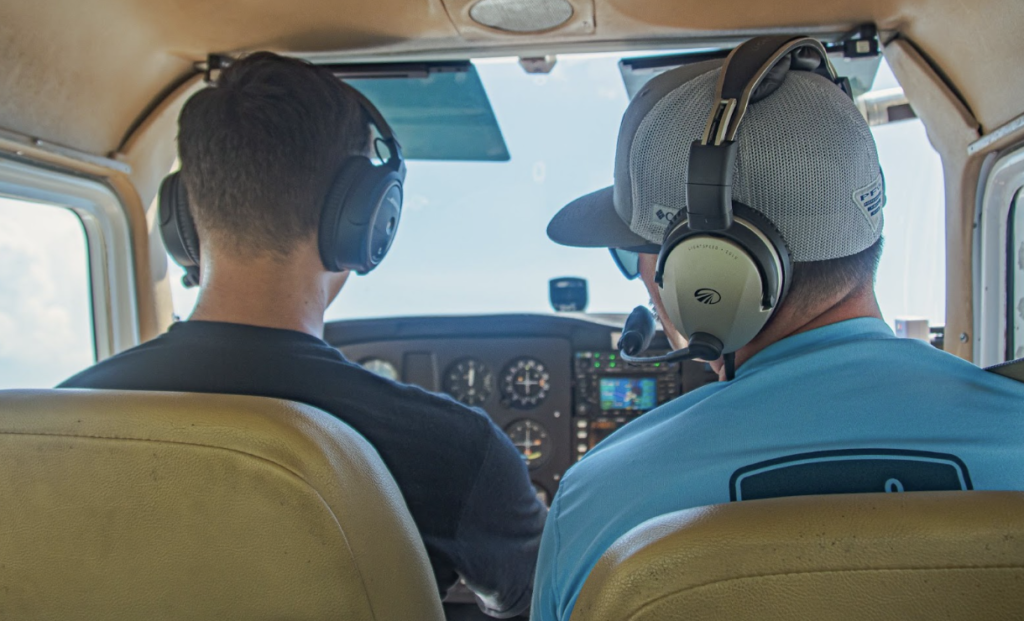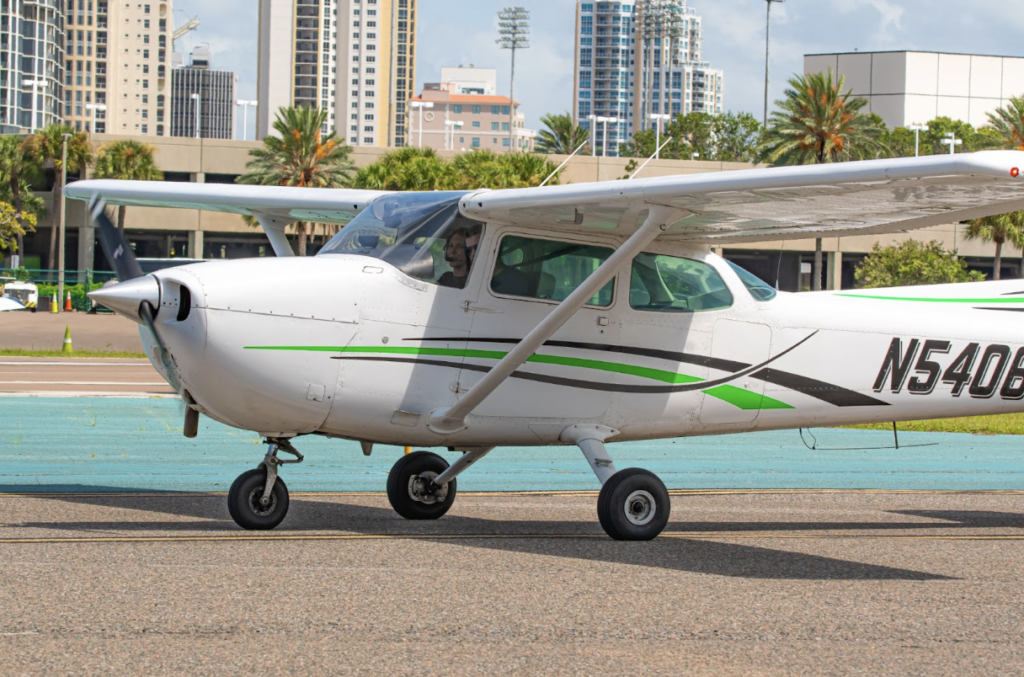The journey to becoming a pilot is an exhilarating and rewarding endeavor. Friends of Albert Whitted Airport is passionate about fostering the next generation of aviators. In this guide, we’ll take you through some of the essential steps and milestones on the path to earning your wings and becoming a pilot.
If you think you would be interested in learning how to fly, the first step is to take a discovery flight.
Discovery flights, offered by flight schools, are discounted introductory flight lessons meant to show someone what it’s like to fly for the first time. During a discovery flight, the certified flight instructor (CFI) will go over some basics of flying and give you the opportunity to take the controls of the airplane. If you discover a love of flying and want to earn your private pilot license just for fun, or if you want to become an airline pilot someday, the flight school will match you with an instructor, discuss program details, and set up lessons that work with your schedule.

Flight training includes ground instruction, self-study, and flying with a certified flight instructor (CFI).
The amount of time it takes to earn your pilot’s license depends on how much time you are able to dedicate to flight training each week. St. Pete Air, Albert Whitted Airport’s flight school, recommends two or three 2-hour lessons per week for full time students. Lessons typically include two hours of instructor time and a one-hour flight.
During flight training, you’ll learn airspace rules, airport procedures, aircraft controls and operational limitations, flight planning, pre-flight procedures, taxiing, take-offs and landings, traffic patterns, basic maneuvers, stall recovery, emergency procedures, and more. Once you have mastered all maneuvers and required knowledge, you will need to pass a pre-solo test given by your instructor. When you and your instructor agree that you are ready for solo flight, they will endorse your log book and you will be ready to fly the airplane by yourself. It generally takes about 15-30 hours of flight training before soloing. Typically, soloing involves three take-offs and landings in the traffic pattern. While you do not need a student pilot certificate or a medical certificate to take flight lessons, you must obtain your student pilot certificate and third-class medical certificate before you fly solo. To be eligible for a student pilot certificate, you must be at least 16 years old and be able to speak English fluently.

Although you can begin flight training before obtaining a medical certificate, the Federal Aviation Administration (FAA) recommends getting a medical certificate from an Aviation Medical Examiner (AME) before starting flight training. This ensures that you have no conditions or diagnoses that would prevent you from becoming a pilot. There are different classes of medical certificates for pilots. Private pilots require a third-class medical certificate, which must be renewed every five years until reaching the age of 40 when it must be renewed every two years. Commercial pilots require a second-class medical certificate that must be renewed every year. Airline transport pilots require a first-class medical certificate that must be renewed every year until reaching age 40 when it must be renewed every six months. These medical exams assess pilots’ vision, color vision, hearing, blood pressure, heart health, medical and mental health history, and prescription history to make sure there is no medical issue that would prevent the pilot from flying safely.
To obtain your private pilot certificate with an airplane single-engine rating, you must log at least 40 hours of flight time, including at least 20 hours of flight training with an instructor and at least 10 hours of solo flight time. There are specific hour requirements for cross-country flying and night-time flying. All requirements for earning a private pilot certificate are located in Part 61 of the Code of Federal Regulations (CFR). Once you have met the requirements, you will need to pass the FAA Practical Exam, also known as a check ride, which is given by a designated FAA examiner (Designated Pilot Examiner, also known as a DPE) and will consist of an oral exam and a flight exam.
After you earn your private pilot certificate, you can fly by yourself and fly with passengers under Visual Flight Rules (VFR). The next step in a pilot’s journey is to earn an Instrument Rating, which allows pilots to fly in clouds and in other low-visibility conditions under Instrument Flight Rules (IFR).
If you want to earn money as a pilot, you will need to earn your commercial pilot certificate, which requires additional training and testing. To earn your commercial pilot certificate, you must be at least 18 years old and have logged at least 250 hours of total flight time. After earning a commercial pilot certificate, many pilots choose to get their multi-engine airplane rating, which allows them to fly airplanes with more than one engine.
To fly for the airlines, you will need to earn your Airline Transport Pilot certificate (ATP).
To earn your ATP, you must be at least 23 years old and have your commercial pilot certificate and instrument rating. You must have at least 1,500 hours of total flight time and pass the ATP knowledge test. Many pilots build their time by working as certified flight instructors, allowing them to learn as they teach other new pilots.

There are many resources to help you understand all of the requirements on the path to becoming a pilot, whether you simply want to fly for fun or whether you plan to become an airline pilot:
*https://www.ecfr.gov/current/title-14 Federal Aviation Regulations (FAR)
*https://www.faa.gov/pilots/become FAA- Become a Pilot
*https://www.aopa.org/training-and-safety/learn-to-fly AOPA- Learn to Fly
*https://stpeteair.org/flight-training/ St. Pete Air- Flight Training
*https://stpeteair.org/wp-content/uploads/Private-Syllabus-v1.2-1.pdf St. Pete Air- Private Pilot Syllabus
Friends of Albert Whitted Airport is offering three levels of flight training scholarships to help committed young people discover aviation career opportunities, help student pilots pursue their Private Pilot License, and help young private pilots achieve an advanced rating or certificate. FOAWA is partnering with St. Pete Air to provide students with flight training and the support they need to be successful. The application deadline is Wednesday, January 17, 2024. If you are interested in beginning flight training, or if you are a previous FOAWA scholarship recipient, you are encouraged to apply at the following link: https://foawa.org/24application/.
If you would like to support our scholarship program, contributions are tax deductible. For more information click here.